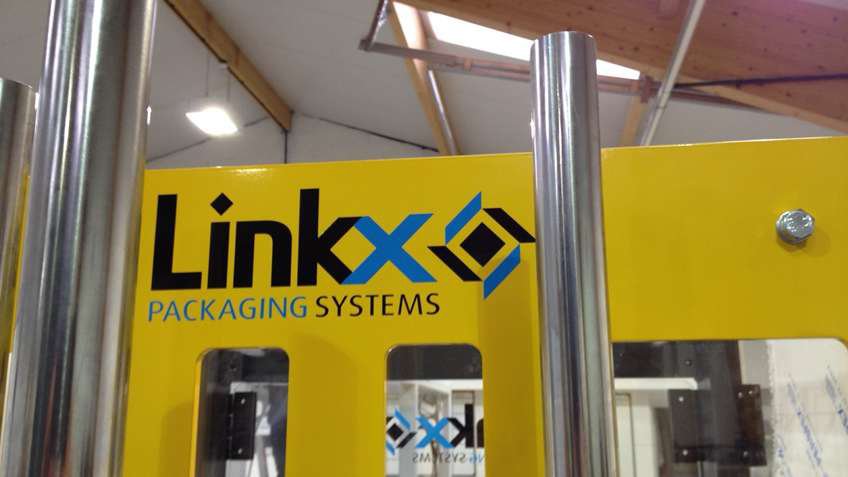Challenge
As well as requiring the necessary control features, Linkx also wanted the new solution to match its needs in terms of space constraints. This also meant that it had to replace the existing Allen-Bradley PowerFlex® drive and the Allen-Bradley PanelView™ HMI.
According to Tom Whatling, the service manager at Linkx:“We wanted same machine with same advantages, we were looking at ways of controlling the pneumatic version for a cost-effective price but with none of the control penalties.”
In operation, the machine uses a vacuum head to remove a tray blank from the bottom of a stack. A pneumatic cylinder moves the head up, turns on the vacuum and then moves down again pulling the bottom most stack onto runners, a cylinder then nudges the blank onto rollers at which stage hot melt adhesive is applied during transfer. The runners transfer the board to the plunge area, which sees a plunge cylinder push the blank down through a former where the glue takes and cures, the plunge head then ejects it down on to a discharge conveyor which transports the newly formed tray out of the machine.
Solution
The brains of the new system, the Micro-800 series PLC uses component HMI to allow direct access to PLC variables. This is coupled to a smaller-footprint Allen-Bradley PowerFlex 525 drive, which also offers safe torque off, which means the power can be left on the inverter, but the inverter discharge circuits are isolated allowing operators to enter the machine's envelope without shutting the power off. A dual input safety relay, coupled to E-Stops and guards on the same unit still allow the machine to meet the machinery safety directive.
Results
Linkx is now able to market the tray erector at a very attractive price, allowing more of its customers to be able to consider automatic tray erection due to quicker payback. The solution is powerful enough to run the pneumatic technology, but at a more entry-level price.
“We get the same tray erecting performance as the servo based machine, but at a lower speed and a more attractive entry level price,” Whatling explains, “which was our original goal.
The panel is also much more compact– roughly 25% the size of the servo solution due to the smaller electronic components used. “We have always found that Rockwell Automation equipment meets our needs, has excellent reliability and is always up to date,” Whatling concludes, “it is also well recognized and well received by our customers. In general, when given a choice we will always opt for Rockwell Automation, it is our standard.”

